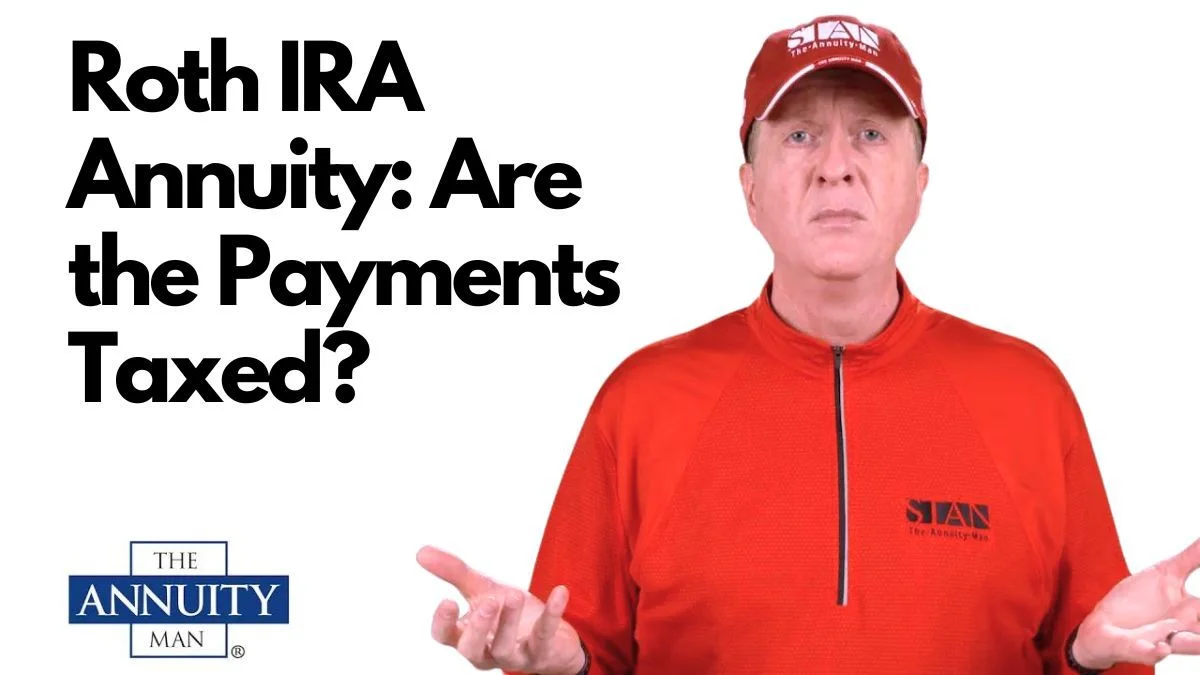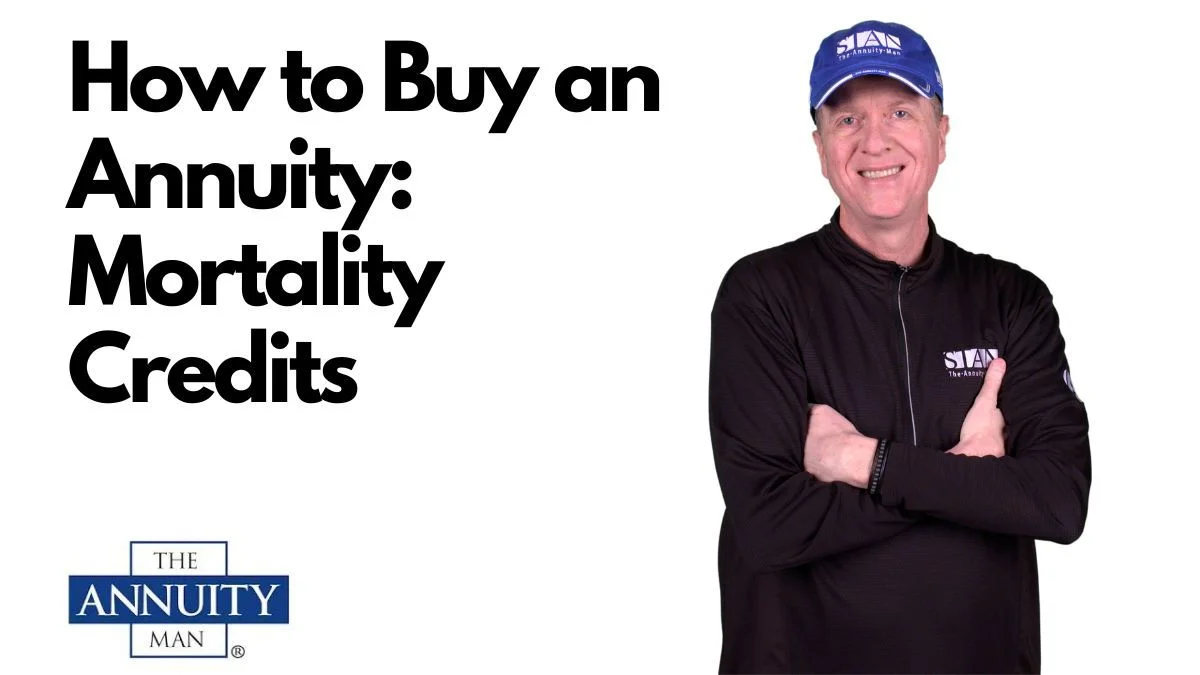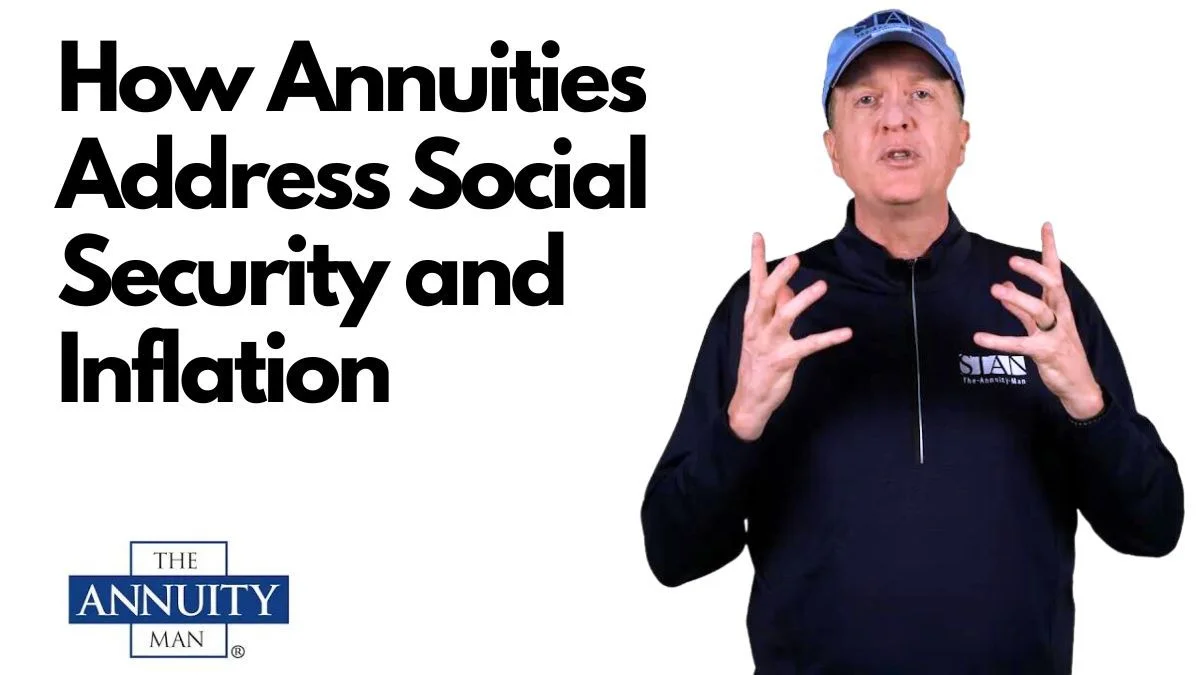Table of Contents
Inverted Annuity Yield Curve: Shootin' It Straight with Stan®

Today's topic is the inverted annuity yield curve. Now, CNBC, Fox Business, and everybody in the newspapers and the Wall Street Journal are just writing these articles about the inverted yield curve. What is that? The definition purely and simply is that the two-year Treasury rate is higher than the ten-year treasury rate that just recently happened, and typically when that happens, that's a pre-determinant of a possible upcoming recession. We know what comes with that and all of the things that come with that. But we're going to talk about how it affects annuities and what's happening in this inverted yield curve environment, which is strange.
Now, we're having multiple black swan events, as you well know. We just got out of the COVID; we have inflation, gas prices at ridiculous levels, and a war going on. We have a potential war with China, who's watching Russia see how all this plays out, and they're going to start invading and taking over as well. We printed tons of money, 25 percent more money than we had two years ago, and the Fed is saying they will raise interest rates. That's a lot to take in. In addition, we have new things like crypto, and we just have all chaos. How do you decipher this? How do you time it? One of the biggest questions I get is, "Hey, Stan, what's the best time to buy? Should I wait? Should I buy now?"
There are no good answers to spend sales pitches, as you know.
But let's talk about this inverted yield curve, how it affects annuities right now, what we are, and the potential opportunity you can take advantage of. Interestingly enough, easy for me to say, Multi-Year Guaranteed Annuities are called MYGA, which is the annuity industry version of a CD; it’s a guaranteed interest rate for a specific period of time. If you purchase CDs, then you're going to like MYGAs. Some people compare it to bonds. I'm not sure I want to go there because bond valuations underlying can change. In contrast, an MYGA underlying evaluation is locked in principle protected on making better than a bond, but it is what it is.
But what we see in this inverted yield curve is an opportunity for you, and that's not some darn sales pitch, so calm down. You know me better than that. I'm not going to do that. But what we've seen is, in the MYGA world, and when you go to my site at theannuityman.com, and you pull up the live MYGA feed, you put in your state, you put it in the duration that you're looking for, one year, two years, three years, four years, five years, and it pops up all the carriers. Nowadays, carriers will pop up that you've never heard their name, or they're an A-minus rated or A-rated or B double plus rated, or even B plus rated. I have a different strategy for analyzing MYGAs and the carriers for the claim expandability.
Unlike lifetime income stream annuities, which are not MYGAs, PSD is like income riders. When I look at that, I am looking at the client's paying ability for your life, so it's a different analysis than when I looked at a Multi-Year Guaranteed Annuity, where you're buying it for three years; we’re probably only going to be there for three years either we're going to transfer it to another company with a higher rate, we're going to send the money back to you, whatever. I look at it slightly differently, and sometimes we recommend the short end of the spectrum from the duration standpoint. We'll recommend maybe a beatable plus company and in some cases, on a one and a two year, maybe a B plus company because we're only going to be there for two years. Got it? Nod your head
What's happening right now is unbelievable and unpredictable. Still, it’s an opportunity, the big boys and I won't mention their names, but they're A double plus carriers, 98 or 100 on the COMDEX score; these carriers are popping to the top of the MYGA feet. Now typically, let's just say two months ago, if you pulled the MYGA feet for your state and you scroll down, and you're looking for that A double plus carrier because you want to go with quality, highly rated, high complex core carrier, they were way down the list. They were either 50 or 75 basis points lower than the highest yield for that duration.
For instance, if the highest three-year yield was 2.75, these A double plus carriers were at maybe 2.1. Maybe you wanted to buy it at 2.1. But what we're seeing right now are the big boys; the A double plus carriers are at the top or right at the top. They're either finishing number 1 or number 2 or number 3. In that scenario, no brainer when looking at the double, A plus carriers versus B double plus carries. You're going to choose the big boy; you’re going to choose the claims-paying ability of those A double plus carriers. People always say, "What happened? Did those companies go out of business? They won't open during A double-quotes. No company’s too big to fail. Bull crap." If these A double plus carriers 100, 98, and 99 on a ComTech score go out of business, then you and I are in your local grocery store, and at the bread aisle, I see you pick up the bread, the white bread, the cheap one, and I'm going to punch you in the face to get it.
In other words, there's anarchy: you and I are fighting for bread. If these companies ever go out of business, we have bigger issues in the country, so don't even start with me. These A double plus companies can back up the claims. With that being said, I am telling people to go five years and in, so look at the one year, two years, three years, four years, five years, but where these A double companies plus are being competitive is at the three-year and five-year level. Oh, my goodness, pound the table, take a look, don't hesitate.
Now I've had people go, "Well, I like that, Stan, but I will wait for interest rates to move." That's your call, player. It's your money. I respect that, but this is a moment in time. Now, the only negative, I would say, to these types of offerings from these A double plus carriers, their minimum to get into the policy is typically $100,000. Not all the time, but most of the time. I know a lot of you said, well, that's too much, that's too rich for my blood, that's fine. But this is your place to go for the people who want a very good CD type rate and a very good bond type rate. Now, let's talk a little bit about the bond comparisons because I managed municipal bonds and bonds in general at Morgan Stanley and UBS a long, long time ago; in a previous life where I wore suits and not hats and sweatsuits, I like to have some sweat suits better by the way, I don't like comparing bonds and annuities, and a lot of Yahoo indexed annuity, gunslinger, idiots, the salesman that are just given the annuity stream that name, goes, "Well, those annuities are like bonds." No, they're not. Suppose you're going to compare bonds to annuities.
In that case, the only product comparison is multi-year guaranteed annuities, or multi-year guaranteed annuities, whatever grammatical is or you want to put there. MYGAs are the only legitimate correlation. Why? Because bond yields have a guaranteed coupon, MYGA yields have a guaranteed coupon. Index annuities don't have a guaranteed coupon. It's hypothetical, theoretical backtested. Unicorn chasing a butterfly, nonsense, projected, hopeful, return scenario, what the agents put in a square peg into a round hole. Don't let that person do that.
Unfortunately, some smart people are friends who have written stupid articles saying, "Well indexed annuity should be compared to bonds." No, get out of your ivory tower, take off the jacket with those elbow protectors, get the pipe out of your mouth, and get real. Get down here in the dirt with Stan, the annuity man® dealing with consumers across the country in all 50 states, and I know bonds. I have forgotten more about bonds than most people will ever know. I manage them at a very high level. Annuities are not bonds, but if you're going to make that correlation, I was just art. It's my guess.
I was just mentioned in an article in Barron's about where to find good yield that's comparative to bonds, and the author contacted me, and he asked the index annuity question, and I yelled, no. I said my guess, and when I showed it to him, he was like, "Well, why isn't anyone else sure?" I asked two others, why isn't anyone? Because the commissions are way low, but it doesn't matter, who cares. That didn't matter to you.
Commissions are building in any way, and if you say, I want a guaranteed interest rate, and I want a short-term piece of paper, and some sociopaths urge you on an indexed annuity, you need to smack him like Will Smith smack Chris Rock. You can do that because you're not going to get in trouble if you smack people now. You literally can walk up and smack them, and if they arrest you, you go, wait a minute, Will Smith did not get arrested when he hit Chris Rock, and Chris Rock didn't say as an offensive thing as this agent just said to me when he said index annuity is like bonds and my goods are like bonds.
Listen to me, lean in. This is a moment in time. The inverted annuity yield curve equals opportunity. The inverted annuity yield curve means the big boys are coming in and being ridiculously competitive with MYGA rates and the three and five-year tranches. They’re trying to wipe people; they’re trying to dominate. They're trying to suck the oxygen out of the room and suck all the money out of the annuity and MYGA spaces. I feel sorry for those lower carriers rates because you can't argue and say, "Well, we're B double plus, and we got nice people at the company that made good coffee, and you should buy us instead of A double plus carriers."
Give me a break. So the inverted annuity yield curve, the inverted yield curve equals annuity opportunity that even yours truly, Stan, the Annuity Man®, did not predict. But it's time for you to take a look, go to my site, theannuityman.com, pull up the MYGA feed, and schedule a call with me. Let's talk about it. See you next week.
Never forget to live in reality, not the dream, with annuities and contractual guarantees! You can use our calculators, get all six of my books for free, and most importantly book a call with me so we can discuss what works best for your specific situation.

.svg)



































.webp)


























_(20).webp)




















_Thumbnail.webp)




















